Student support services
Kyoto University has been implementing student support measures to create a better living environment for students, and improve their learning outcomes, making reference to student life survey results, responses to various types of questionnaires, requests received on a day-to-day basis, and other types of information. Measures taken in recent years are as follows.
1. Recreation
1. Facility improvements and support for extracurricular activities
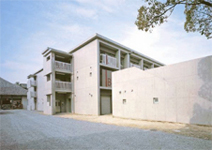
Facilities for extracurricular activities on the West Campus (Box House)
(1) Facilities for extracurricular activities newly constructed on the West Campus (Box House)
The facilities, which were newly built in 2009, consist of a one-storied building and 4 three-storied buildings that have 42 club/circle rooms, 22 common rooms for use by groups without their own clubrooms, 21 shared storage rooms, 2 rooms used for practicing musical instruments, and 4 shared workrooms.
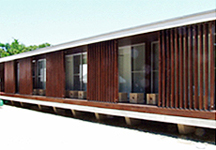
Shirahama Seaside House
(2) Complete renovation of Shirahama Seaside House
Shirahama Seaside House, which was completely renovated in 2008, is a one-storied wooden house with 2 Japanese-style rooms and 3 Western-style rooms and the capacity to accommodate 30 guests. In Nanki Shirahama, the house is directly located on the seafront. Many visitors come to swim in the sea, windsurf, and hold training camps, among other activities.
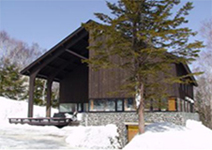
Shigakogen Hutte
(3) Opening of Shigakogen Hutte (Shiga Highlands Hutte)
Shigakogen Hutte was donated to the Ski Race Club alumni in 2009. This wooden cabin with 2 aboveground floors and a concrete-built storage room in the basement has 2 Japanese-style rooms and 5 Western-style rooms, and it can accommodate up to 28 guests. The cabin is located in the Shiga Highlands, and guests can access the lift station on skis. They stay in the cabin to enjoy skiing in winter, go mountain climbing in summer, or hold training camps.
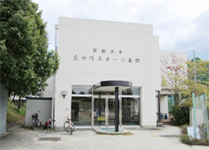
Kitashirakawa Sports Hall
(4) Renovation of Kitashirakawa Sports Hall (training camp facilities)
Renovation work was carried out in 2010. This hall, a two-storied reinforced concrete building, has 6 rooms to accommodate up to 90 persons, a meeting room, a training room, and a shower room. Clubs/circles use this hall for training camps and other events.
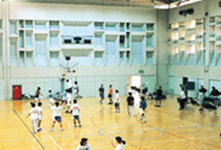
Gymnasium
(5) Renovation of gymnasiums, grounds, tennis courts, etc.
Each campus is equipped with various gymnastic facilities, including a gymnasium, tennis courts, and training rooms, which are used for club/circle activities and gymnastics classes. The university provides support necessary for renovation and maintenance of these facilities and areas.
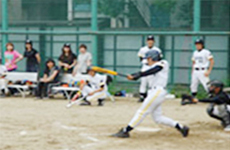
Students engaged in extracurricular activities
(6) Support for facilities, equipment for extracurricular activities, etc.
The university provides support to its official athletic and cultural clubs and circles by maintaining and lending the facilities and equipment necessary for their activities.
Link: https://www.kyoto-u.ac.jp/en/current/campus-life/extracurricular-activities
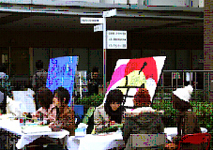
Refreshment booths
(7) Support for Kyoto University November Festival, Sports Festival, etc.
The university provides support for the November Festival of Kyoto University, which is held late in November every year, sports festivals including the Seven Universities Athletic Meet, and the Kyoto Intercollegiate Festa organized chiefly by students in Kyoto Prefecture.
Link: http://www.kyoto-u.ac.jp/en/current/campus-life/event/november-festival-festival-eve
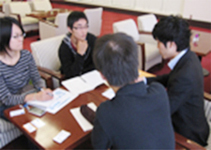
Responding to consultation in the Student Consultation Room
(8) Creation of the Student Consultation Room
Students acting as consultants give advice to their peers about various matters such as volunteer activities, event planning, and exchanges with local communities. Those who serve as advisors are experienced and highly motivated students, and some of them are winners of the President Award.
2. Implementation of extracurricular cultural events, etc.
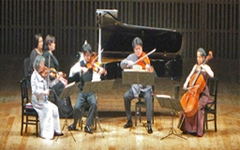
Concert
(1) Concerts and noh (no-gaku) performances
The university hosts events that offer opportunities for exposure to traditional Japanese entertainment, culture, and music, and for literacy development. In June each year, a concert with famous musicians is held at the Kyoto Concert Hall in celebration of the anniversary of Kyoto University's foundation. In December, a noh and kyogen appreciation event is held in Kyoto Kanze Nohplay Theater.
Link: http://www.kyoto-u.ac.jp/ja/education-campus/campus_event/extra (in Japanese)
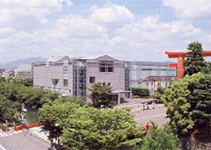
The National Museum of Modern Art, Kyoto
(2) Participation in the Campus Members System
The university's Campus Members System is designed to provide students with opportunities to study culture and history in cooperation with museums and galleries in Kyoto and surrounding areas. Currently, under this system, admission discounts and other services are available at Kyoto National Museum, Nara National Museum, the National Museum of Modern Art, Kyoto, and the Chado Research Center Galleries.
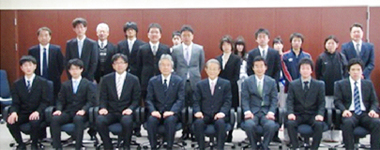
Commemorative photo of fiscal 2010 winners
(3) Student commendation (Kyoto University President Award)
The Kyoto University President Award is given to individuals and groups that have produced outstanding academic achievements, obtained excellent results in nationwide contests in their extracurricular activities, or gained a high reputation for their social contributions through volunteer activities, thereby remarkably increasing Kyoto University's prestige and serving as models for their peers.
Link: http://www.kyoto-u.ac.jp/en/about/honors/presidents/about-the-kyoto-university-presidents-award
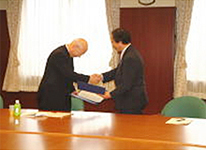
Signing ceremony for the agreement
(4) School-supported student volunteer programs
Based on an agreement on cooperation with the Kyoto City Board of Education, students who have high levels of expertise and skills, who seek active involvement in classroom teaching, or who aspire to become teachers are engaged in volunteer activities in municipal schools, kindergartens, and the like.
(5) Kyoto City Campus Culture Partners System (for undergraduate students only)
This system is implemented by Kyoto City with the aim of providing an environment that allows students to enjoy art and culture and offering them opportunities to establish contact with local communities through participation in cultural and artistic activities. In such ways, the system encourages students to deepen their understanding of culture and art, and it helps make their campus life more fruitful. Undergraduate students are eligible for participation in this system, and they can receive preferential treatment such as admission discounts at cultural facilities by applying for membership (free of charge) as individual students.
Link (Kyoto City website): www.city.kyoto.lg.jp/bunshi/page/0000111091.html (in Japanese)
3. Improvement in various facilities including dormitories, canteens, etc.
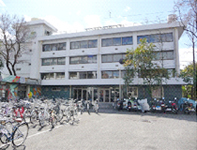
Kumano-Ryo
(1) Renovation of student dormitories
The university has four student dormitories (Yoshida-Ryo, Kumano-Ryo, Joshi-Ryo (Women's Dorm), and Muromachi-Ryo), and provides support necessary for renovation and maintenance of these facilities.
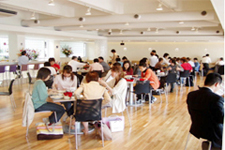
Cafe Restaurant Camphora
(2) Renovation of canteens, stores, etc.
The university has cafeterias, coffee shops, stores, and restaurants on every campus, and these facilities help students improve their dietary lives and enrich their lifestyles. The university provides support necessary for renovation and maintenance of these facilities.

